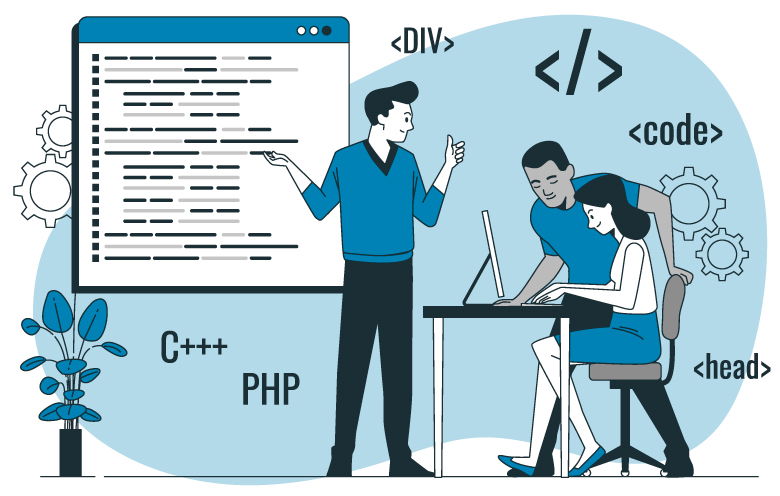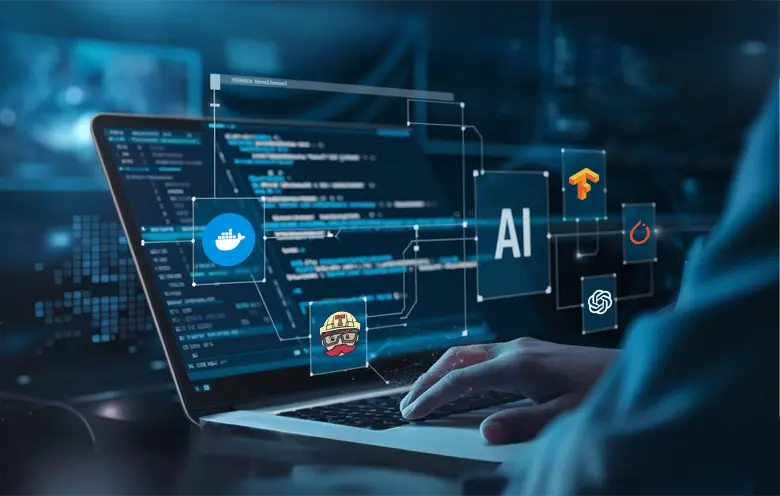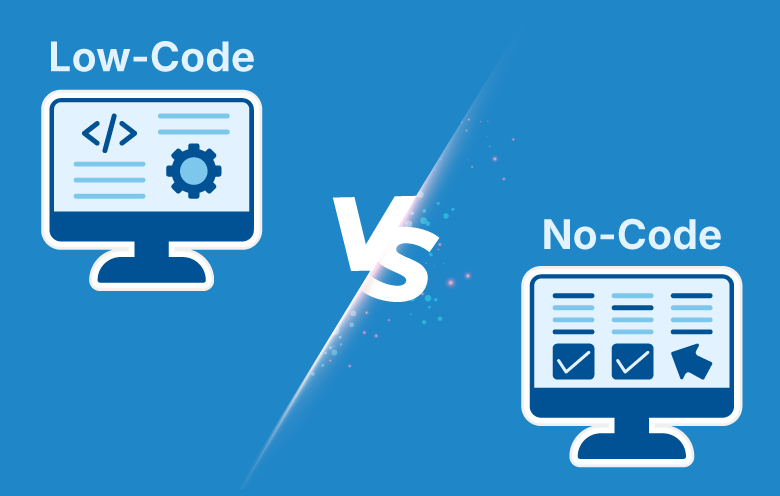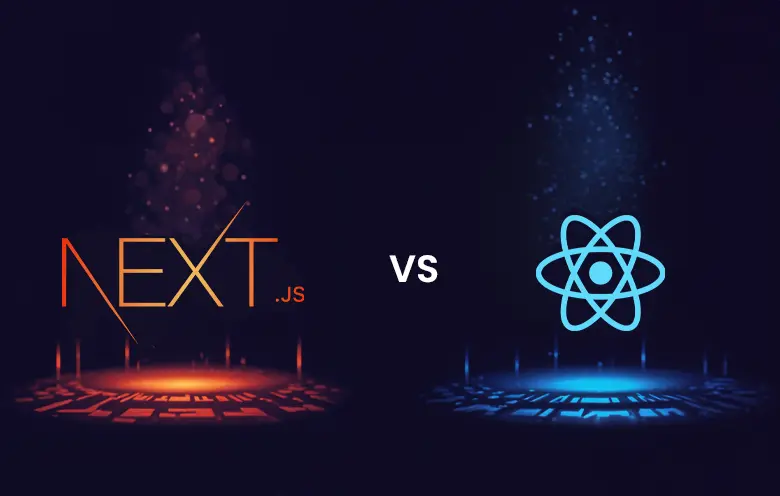A growing number of companies are using full stack development services nowadays. There are several reasons for this, including user-friendly app development, business agility and the versatility of full stack developers. As a result, modern organizations are constantly looking to hire full stack developers who are proficient in multiple technologies as well as project management. Full stack developers do not need to be trained by businesses and doing so will simply result in cost savings.
In this blog, we will discuss some key trends in full stack software development that require the attention of all businesses and developers.
Key trends for full stack development to watch
Artificial intelligence (AI)
AI allows you to create predictive algorithms that analyze large amounts of data and predict outcomes accurately without human intervention. Full stack development enables responsive and interactive user interfaces. Creating AI-enabled full stack web and mobile applications streamlines and simplifies tasks, saving time and money. You can process large amounts of data quickly and accurately to make better decisions or forecasts.
AI can be leveraged in a variety of use cases using full stack app development. Some examples include:
- Create personalized recommendations based on behavior and preferences
- Recognize images and speech
- Understand and respond to human language – chatbots and virtual assistants
- Make predictions based on historical data
- Create autonomous systems such as self-driving cars, drones and robots
Full stack development tools for artificial intelligence
| Database Tools | MySQL, MongoDB, Oracle, Cassandra, HBase, or Postgres |
| Programming Tools | Scala, Java, Go, Python or PHP |
| Framework Tools | Django, Hadoop, Spark, Spring, Flask or Laravel |
| Other Tools | RESTful APIs, Microservices and Multithreading |
| Front End | React, Vue, Redux, or Angular |

Mixed reality
Mixed reality app using full stack tools and technologies enables you to create enterprise application for immersive experiences. By allowing users to interact with real-world objects in a virtual setting bridges the gap between the virtual and physical worlds.
These technologies can be used to create interactive educational and immersive training experiences, and even virtual office spaces. By combining full stack development services with mixed reality, you can build interactive and realistic experiences that can be used for a variety of purposes such as –
- Training and simulation
- Product visualization
- Customer engagement
- Data visualization
- Remote collaboration
Full stack and MR tools to leverage
| Database Tools | MySQL, SQL Lite, Oracle, NoSQL |
| Programming Tools | C, C++, C#, Unity, Blueprints Visual Scripting and Unreal Engine |
| Framework Tools | Web-VR, A-frame and Three.js |
| Other Tools | Video Editing, CAD, VR Operation tools,3-D modelling |
| Front End | JavaScript, CSS, Node JS, Typescript and React |
| Video Editing Tools | Blender, Autodesk Maya and Autodesk 3ds Max |
Internet of Things (IoT)
The combination of IoT and full stack development allows developers to create highly functional and connected applications that are tailored to specific business needs. Organizations can opt IoT full stack application development to monitor and control connected devices, collect data from them, and even automate tasks. IoT software development using full stack tools helps diverse industries in –
- Track inventory levels in real-time
- Monitor equipment to prevent downtime
- Optimize energy usage
- Monitor crop conditions and weather to optimize crop yields
Full stack and IoT technologies to leverage
| Database Tools | Oracle, SQL Queries, JDBC, NoSQL and Data Modeling |
| Programming Tools | Java, Containers, Maven, Junit, MVC and Sonar |
| Framework Tools | ThingSpeak, Zetta, Device Hive |
| Other Tools | Hardware Interfacing, API automation and Testing, Business Intelligence, IoT e2e flow, DevOps, Microservices and Rest API |
| Front End | JavaScript, CSS, Node JS, Typescript and React |
| Cloud Infrastructure | AWS, Azure, /IOTCONNECT™ |
Blockchain
Blockchain technology and full stack development can be combined to create decentralized applications (dApps) that leverage the benefits of both. Blockchain provides a secure and transparent way to store and transfer data, while full stack development allows for the development of robust and feature-rich applications that can be accessed through a web or mobile interface.
Together, they can be used to create decentralized apps that are secure, transparent and user-friendly. This makes them suitable for a wide range of applications, such as supply chain management, digital identity and decentralized finance.
Full stack and blockchain technologies to use
| Database Tools | MongoDB, Oracle, HBase, GraphQL, Neo4j, or Cassandra |
| Programming Tools | Java, Go, Python, Node.JS, Rails, Golang or PHP |
| Framework Tools | Django, Hadoop, Spark, Spring, Flask or Laravel |
| Other Tools | Docker, Kubernetes, or CI/CD pipeline |
| Front End | Angular, JavaScript, React, Vue, CSS or HTML |
| Cloud Infrastructure | AWS, Google Cloud, Azure |
Big data and analytics
By combining big data and analytics with full stack development, businesses can gain a competitive edge and capitalize on customer insights to improve their operations. Full stack app development can be used to integrate data from multiple sources and create applications that are secure, reliable and easy to maintain. Big data and analytics can be used in a variety of business use cases by utilizing full stack app development.
Some examples include –
- Analyze customer behavior and preferences
- Detect and prevent fraudulent activity
- Predict and prevent potential equipment failures
- Optimize inventory levels and minimize waste
- Gain insights into sales trends and customer demographics
Serverless technology
Serverless technology can be used for full-stack development, allowing your enterprise to create end-to-end applications without having to manage servers. This technology can be used to develop both the front-end and back-end of an application.
On the front-end, developers can use serverless technologies such as Amazon Web Services (AWS) Lambda, Google Cloud Functions, or Azure Functions to handle user requests, process data and perform business logic. On the back-end, developers can use serverless databases such as Amazon DynamoDB, Google Cloud Firestore, or Azure Cosmos DB to store application data.
Low-code development
Low-code development is a software development approach that reduces the amount of manual coding needed to create a functioning application. It makes use of graphical user interfaces (GUIs) and other tools that allow full stack developers to create applications with minimal or no code. On the other hand, full stack development covers all aspects of a web application, including the front-end, back-end and database.
A mix of low-code and full stack development can allow the development team to leverage a combination of low-code and coding techniques to create a web and mobile application. This could include using a low-code platform such as Salesforce or Appian to build the user interface and basic functionality, as well as writing code to implement specific features and functions.
The technological blend not only enables the development of complex business solutions, but also acts as a catalyst for organizations seeking digital transformation.
DevOps
DevOps bridges the gap between development and operations teams, fostering collaboration through shared goals, streamlined processes, and powerful tools. This approach unites development, IT operations, engineering, and security, enabling them to work together seamlessly throughout the application lifecycle, from planning and development to delivery and ongoing maintenance.
One of the key tools used in DevOps is continuous integration and continuous delivery (CI/CD). CI/CD automates the development and deployment process, ensuring frequent updates and faster time to market. The increasing demand for DevOps professionals, reflects the growing importance of this approach in today’s software development landscape.
Progressive web app (PWA)
A progressive web app (PWA) with a full stack development approach means that both the frontend and backend of the application are developed using the same technology stack. This approach ensures that the overall development process is simpler and more efficient for your enterprise.
The frontend of the PWA is typically developed using HTML, CSS and JavaScript, while the backend is typically developed using a server-side language such as Node.js, PHP, or Ruby on Rails. Depending on the exact requirements of the application, a database such as MongoDB, MySQL, or PostgreSQL may also be used.
Businesses can use full stack development services to create PWAs for providing a seamless user experience and giving easy access to customers on any device. PWAs can also improve engagement and customer retention and can be less expensive to develop and maintain than traditional native mobile apps.
Suggested: Benefits of progressive web apps for a better user experience
Conclusion
These are some of the new full stack development trends to watch out. By making the most of these technologies and tools, you will not only be able to expand your business but also address many of your business-specific challenges.
If you are looking to develop a full stack application by incorporating the trends and technologies mentioned above, then your organization can gain high ROI and sustain a long-term relationship with their existing customers. To know how full stack app development can help your business model evolve, get in touch with our experts.



